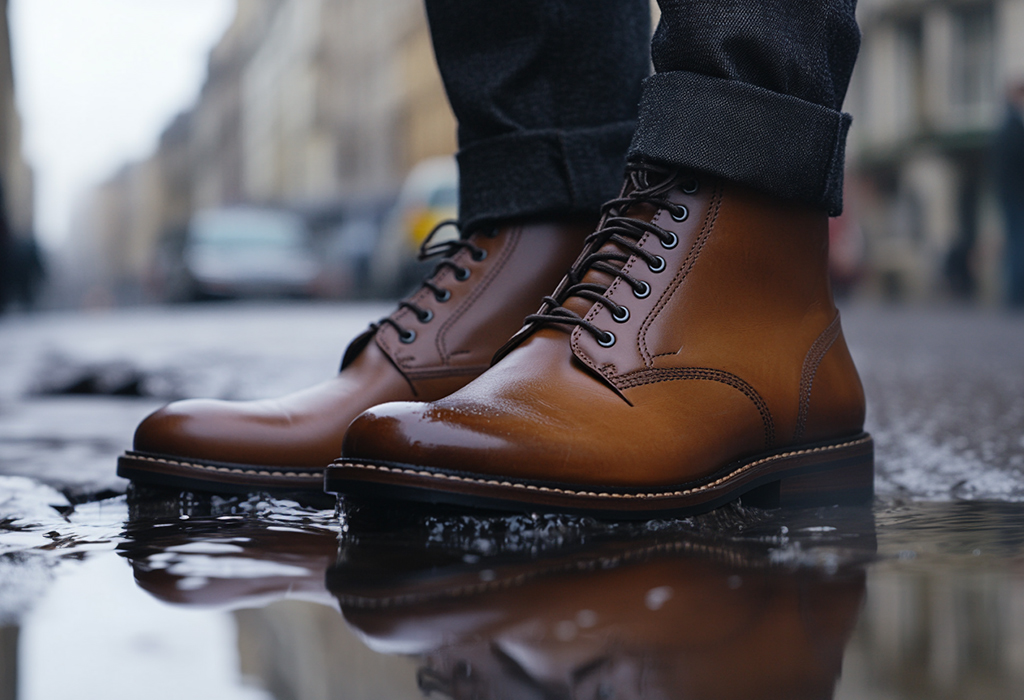Guide to Choosing the Perfect Leather Boots for Style and Comfort
Leather boots are a timeless fashion staple and practical footwear choice that has endured through generations. Whether used for work, casual wear, or fashion statements, leather boots blend durability, style, and comfort like few other shoes can. From rugged hiking boots and sleek Chelsea styles to sturdy work boots and fashionable knee-highs, there are many varieties available to suit different needs and preferences.
As consumer interest in sustainable fashion and high-quality materials continues to grow, leather boots have emerged not just as a seasonal trend, but as a long-term investment in both style and utility.

Why Choosing the Right Pair of Leather Boots Matters
Impact on Comfort and Foot Health
Ill-fitting or poorly made boots can cause blisters, arch pain, and long-term foot problems. Selecting the right pair means supporting your feet properly throughout the day, especially if worn for extended periods.
Versatility in Styling
Leather boots can easily be styled with a wide range of outfits — from jeans and dresses to workwear and formal attire. A well-chosen pair will serve multiple occasions.
Cost-Effectiveness Over Time
While genuine leather boots might have a higher upfront cost, they often outlast cheaper alternatives. With proper care, a good pair of boots can last several years, making them cost-effective over the long run.
Environmental and Ethical Considerations
Today’s buyers are more aware of the environmental impact of fast fashion. Choosing ethically sourced, sustainably tanned leather and high-quality craftsmanship can contribute to more responsible consumer behavior.
Latest Trends and Developments (2024–2025)
The past year has seen several updates in the leather boot industry, driven by technology, sustainability, and changing fashion preferences:
-
Sustainable Leather Innovations: In 2024, many brands began adopting vegetable tanning methods and chrome-free leather processing, reducing the ecological footprint. Eco-friendly lines by major labels like Timberland and Red Wing have received attention for lowering chemical usage.
-
Hybrid Boot Styles: Fashion houses have started introducing hybrid boots that combine sneaker comfort with leather boot aesthetics. This trend gained momentum in early 2025, targeting urban users who walk extensively.
-
3D-Scanning Fit Technology: Some brands introduced apps using smartphone-based 3D foot scanning to help users find the perfect boot fit online, minimizing returns and improving satisfaction.
-
Unisex Designs and Inclusive Sizing: Recent collections are emphasizing gender-neutral designs and extended size ranges, acknowledging a broader audience with diverse needs.
Regulations and Leather Boot Manufacturing
Although leather boots are generally considered fashion items, several laws and regulations affect their production and sale, especially concerning material sourcing and product labeling:
| Region | Key Regulations |
|---|---|
| United States | The Federal Trade Commission (FTC) enforces guidelines under the Textile and Wool Acts, requiring clear labeling of materials used. |
| European Union | The EU Leather Authenticity Regulation mandates that only products made of genuine leather be labeled as such. |
| India | The BIS (Bureau of Indian Standards) requires certification for leather footwear to ensure durability and material quality. |
| Global | The Leather Working Group (LWG) certification is a global standard assessing environmental compliance and sustainable practices of leather tanneries. |
Useful Tools and Resources
When selecting leather boots, several tools and resources can assist buyers in making informed, comfort-focused, and style-conscious decisions:
-
Foot Measurement Apps: Apps like FeetMeter and Nike Fit help measure your foot size accurately at home.
-
Online Fit Guides: Websites like Zappos, REI, and Nordstrom offer extensive size and fit guides tailored to various boot brands.
-
Leather Grade Charts: Helpful infographics from fashion blogs and forums explain differences between full-grain, top-grain, and genuine leather.
-
Boot Care Tutorials: YouTube channels such as Kirby Allison and websites like Leather Honey provide maintenance advice to extend boot lifespan.
-
Eco-Ratings Tools: Use platforms like Good On You to check if the brand aligns with sustainable and ethical standards.
FAQs: Leather Boots Explained
Q1: What is the difference between full-grain and top-grain leather?
A: Full-grain leather is the highest quality leather, retaining the outermost layer of the hide. It’s durable and develops a rich patina over time. Top-grain is slightly sanded and treated for a more uniform look but is still high-quality.
Q2: Are leather boots suitable for all weather conditions?
A: While leather is naturally water-resistant, it’s not fully waterproof. For rain or snow, look for waterproof-treated leather or apply a leather protectant spray. Insulated lining also helps in colder climates.
Q3: How can I tell if a pair of leather boots fits well?
A: Ensure there’s a thumb’s width of space at the toe, the heel doesn’t slip when walking, and there’s adequate arch support. Trying boots with the socks you intend to wear can help with an accurate fit.
Q4: How do I care for leather boots to ensure they last longer?
A: Clean with a soft brush, condition with leather balm, and avoid prolonged exposure to water or heat. Store with shoe trees to maintain shape and use dust bags when not in use.
Q5: Are vegan or synthetic alternatives as good as genuine leather boots?
A: High-quality synthetic options have improved in recent years and can offer similar looks and water resistance. However, they may not last as long or mold to the foot like genuine leather does.
Conclusion
Choosing the right leather boots involves more than picking a stylish pair—it requires considering material quality, fit, durability, care, and ethical sourcing. With the latest technological tools and growing awareness around sustainability, consumers today have more options than ever before.
Whether you're investing in your first pair or adding to a growing collection, understanding these key factors will help you make a smart and satisfying choice. A well-selected pair of leather boots is not only a style essential but also a long-term companion for both fashion and function.